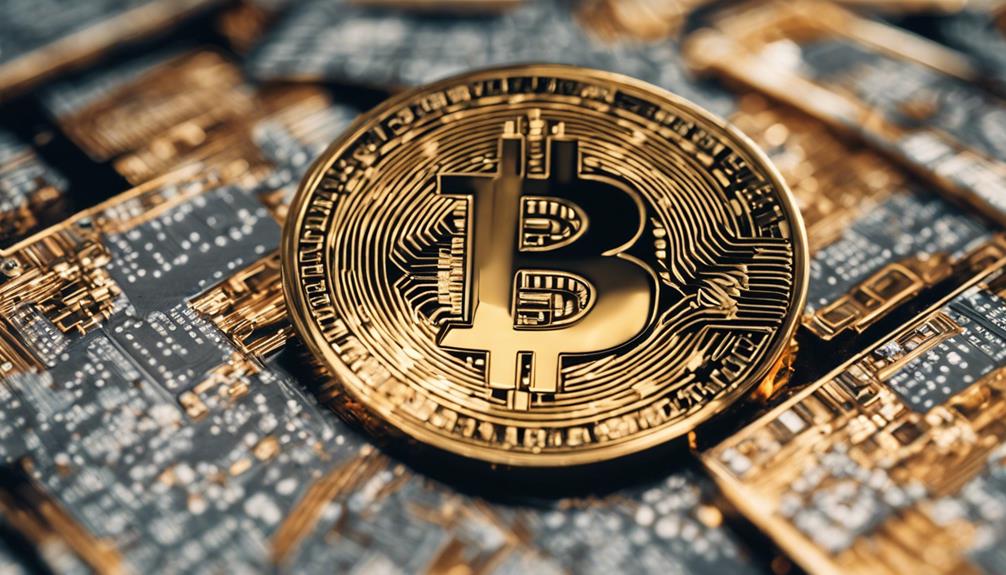When comparing Bitcoin IRA and iTrustCapital, a key difference lies in the fee structures. iTrustCapital offers a simple 1% trading fee, while Bitcoin IRA has a more complex system with setup fees ranging from 0.99% to 4.99%, a 2% trading fee, and a maintenance fee starting at 0.08% with a minimum of $20. Additionally, iTrustCapital has a lower account minimum of $1,000, making it more accessible for investors with limited funds. On the other hand, Bitcoin IRA requires a higher account minimum of $3,000, which is better suited for those with larger investments. These variations significantly impact your potential financial gains in the long term.
Key Takeaways
- iTrustCapital has a flat 1% trading fee, while Bitcoin IRA has a complex fee structure with setup fees and trading fees.
- iTrustCapital has a lower account minimum of $1,000, whereas Bitcoin IRA requires a minimum of $3,000.
- iTrustCapital offers a broader range of investment options including cryptocurrencies and precious metals, unlike Bitcoin IRA which specializes in cryptocurrency.
- iTrustCapital prioritizes security with Fireblocks integration, while Bitcoin IRA uses 256-bit SSL encryption and offers insurance protection.
- iTrustCapital provides online and phone customer support, while Bitcoin IRA offers in-house customer service with dedicated IRA experts.
Fee Structures

When comparing the fee structures of Bitcoin IRA and iTrustCapital, iTrustCapital stands out with its flat 1% trading fee for all transactions. This means that regardless of the type of account or transaction, users are charged a consistent and transparent trading fee.
On the other hand, Bitcoin IRA has a more complex fee structure, including a setup fee ranging from 0.99% to 4.99%, a 2% trading fee, and a maintenance fee of 0.08% with a minimum of $20. These varying fees can potentially lead to higher costs for investors, especially when compared to iTrustCapital's straightforward approach.
iTrustCapital's commitment to offering a cost-effective investing experience is evident through its low trading fee. With no hidden costs and a transparent fee structure, investors can easily calculate and understand the expenses associated with their transactions. This simplicity not only saves users money but also provides peace of mind, knowing that they aren't being surprised by unexpected fees.
Account Minimums

Comparing the account minimums between iTrustCapital and Bitcoin IRA reveals a notable contrast in accessibility for investors. iTrustCapital requires a lower account minimum of $1,000, making it easier for investors to get started. This lower barrier allows individuals to begin investing with a smaller initial investment, which can be advantageous for those with limited funds.
On the other hand, Bitcoin IRA has a higher account minimum of $3,000, which may pose a challenge for some investors looking to allocate their funds. The disparity in account minimums between iTrustCapital and Bitcoin IRA plays a significant role in determining the entry point for investors interested in opening a crypto IRA.
While iTrustCapital caters to those with smaller budgets, Bitcoin IRA may be more suitable for investors with larger funds to commit. Ultimately, the account minimum difference between the two platforms influences the accessibility and suitability for investors based on their financial capabilities and investment goals.
Investment Options

For investors exploring their options, iTrustCapital and Bitcoin IRA offer distinct choices for diversifying your retirement portfolio. Here are some key differences in their investment options:
- iTrustCapital allows you to invest in a wide range of digital assets, including cryptocurrencies like Bitcoin and Ethereum, within a crypto IRA account.
- On the other hand, Bitcoin IRA is a specialized Bitcoin IRA provider, focusing specifically on investing in cryptocurrency for retirement purposes.
- In addition to digital assets, iTrustCapital also offers the opportunity to invest in alternative assets like gold and silver within your retirement accounts (IRAs) for further diversification.
Both companies cater to investors looking to include digital assets in their retirement portfolios, but iTrustCapital goes a step further by offering a broader range of investment options, including precious metals, in addition to cryptocurrencies.
Security Measures

Enhancing the protection of client assets, both Bitcoin IRA and iTrustCapital prioritize security measures to safeguard digital investments. Bitcoin IRA employs 256-bit SSL encryption, guaranteeing data transmission security. Additionally, the platform offers insurance protection up to $700 million, bolstering the safety net for investors.
On the other hand, iTrustCapital integrates with Fireblocks, a leading secure asset storage solution, to protect digital assets effectively. Moreover, iTrustCapital's partnership with Coinbase Custody Trust ensures clients benefit from secure storage practices. These measures underscore the commitment of both platforms to providing a secure environment for investors to engage with digital assets.
Customer Service

When seeking assistance with your IRA management, both iTrustCapital and Bitcoin IRA offer dedicated customer service to support investors. Here are the key differences in their customer service:
- iTrustCapital provides online customer service for Traditional, Roth, and SEP IRAs, currently offering support through a phone number in Beta mode.
- Bitcoin IRA, on the other hand, offers in-house customer service with dedicated IRA service experts, providing white-glove service and one-on-one customer care for IRA holders.
- Both iTrustCapital and Bitcoin IRA assist customers in understanding the complexities of IRA management, ensuring that investors have the necessary support and guidance for their individual retirement account needs. Whether you prefer online customer support or personalized service from dedicated experts, both platforms aim to offer a high level of customer service to help you manage your IRA effectively.
Frequently Asked Questions
Which Crypto IRA Is the Best?
When choosing the best crypto IRA for you, consider factors like account minimums, available cryptocurrencies, and fees. Assess your investment goals and risk tolerance to make an informed decision.
Evaluate features such as account types offered and fee structures to align with your financial strategy. Research and compare options like iTrustCapital and Bitcoin IRA to find the one that best suits your needs and preferences.
Is Bitcoin IRA Trustworthy?
Bitcoin IRA is trustworthy due to its solid safety measures, such as 256-bit SSL encryption and insurance protection up to $700 million. Registered with the U.S. Department of the Treasury, it utilizes BitGo Trust as its custodian and offers end-to-end insurance coverage for digital assets.
These factors contribute to its reputation for security and reliability in handling cryptocurrency investments.
What Are the Benefits of Bitcoin Ira?
When considering the benefits of a Bitcoin IRA, you gain access to tax advantages like tax-deferred growth and potential tax-free withdrawals.
By diversifying your retirement portfolio with digital currencies, you open up new investment opportunities. Additionally, Bitcoin IRAs can help you manage capital gains taxes effectively through strategic investing.
Including digital assets in your retirement planning could enhance your long-term investment prospects and potentially boost returns.
How Much Does Bitcoin IRA Charge?
Bitcoin IRA charges a setup fee ranging from 0.99% to 4.99%, with a 2% trading fee and a maintenance fee of 0.08% (minimum $20). Various IRA options like Traditional, Roth, SEP, SIMPLE, and Solo 401k are available.
The fee structure is transparent, tailored to different account types, and assists you in understanding the costs associated with your investment. It's crucial to take into account these fees when deciding on using Bitcoin IRA for your investment needs.
Conclusion
To sum up, when comparing bitcoin IRA and iTrustCapital, it's evident that the key differences lie in:
- Fee structures
- Account minimums
- Investment options
- Security measures
- Customer service
While both platforms offer unique benefits, it's essential to carefully consider these factors before making a decision.
So, whether you're looking to invest in cryptocurrency for retirement or wealth growth, understanding these distinctions will help you make an informed choice.
Sarah develops and leads our educational initiatives to help clients understand the intricacies of investing in gold and cryptocurrencies. Her role is vital in ensuring that our clients are well-informed and confident in their investment decisions. Sarah’s expertise and commitment to education are key to empowering our clients.










